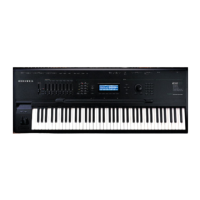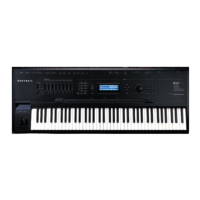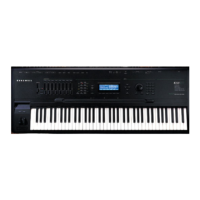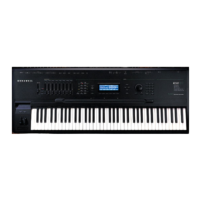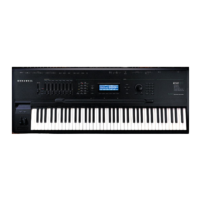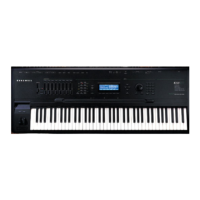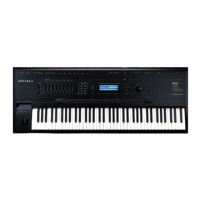DSP Functions
Mixers with Non-linear Inputs
14-50
Mixers with Non-linear Inputs
x AMP
x GAIN
! AMP
AMPLITUDE MODULATION
x AMP
This function can be used in the final algorithm block when it mixes two input wires into a
single output. The two input signals are multiplied. The control input parameters affect the
gain of the multiplied signals. The final amplitude is also affected by the settings for AMPENV
and ENVCTL. Multiplying the two signals can result in outputs that differ dramatically from
the input signals. You can get a wide variety of effects from this function, for example, turning
an acoustic sample and a waveform (or two waveforms) into a sound that has little
resemblance to the input sounds.
When two signals are multiplied, the resulting signal consists of the sums and differences of the
frequencies of each partial of each signal. The frequencies of the original signals do not come
through, unless they have one or more DC components (non-oscillating partials). And of
course, if one of the signals has zero amplitude, the resulting signal also has zero amplitude.
If the fundamental frequencies of the two input signals are related by simple fractions (that is, if
the ratios between their frequencies are something like 1/1, 2/1, 3/1, 4/1, 1/2, 1/3, 1/4, 2/3, 3/
2) the resulting signal will be a harmonic sound. Its partials will be multiples one of the original
fundamentals, or possibly a new fundamental. If the frequency ratios of the original signals are
nearly but not quite one of these fractions, some beat frequencies will be perceived, which may
or may not be useful. Of course, with equal temperament, the ratios given above are not
perfectly precise (a perfect fifth, for example, has a frequency ratio of 1.4983, not 3/2). If the
frequencies of the original signals are not at least closely related, the result of X AMP will be,
shall we say, less than harmonious.
If the frequency of one of the original signals is below the audible range, then the result of
X AMP is not a matter of harmony, but of amplitude. In this case, a tremolo effect (amplitude
modulation) would be heard, because the resulting signal would periodically dip below the
audible range. In fact, when you’re using X AMP in the final algorithm block, you can use any
sample as an LFO source by setting the Adjust parameter on the PITCH page to its minimum.
To make this work, the algorithm must use one of the waveform functions in one of the blocks,
and the sample signal must be routed to the x AMP block. Results will vary.
x GAIN
This function operates like X AMP, except that it is not affected by the settings for AMPENV,
since it occurs before the F4 AMP block.
SHAPER / Final Amp (! AMP)
This function also appears in the final algorithm block when it mixes two input wires to a single
output wire. The two inputs are added, then put through the SHAPER function with a fixed
Adjust value of .25, then amplified according to the values for the parameters on the F4 AMP
control input page.
Amplitude Modulation (AMP MOD)
The AMP MOD function multiplies its two input signals, and the result is multiplied by a gain
value that is determined by the parameters on the AMPMOD’s control input page. This result
determines the balance between the upper and lower wires. AMP MOD can clip the signal, so
you may need to use the Pad parameter.

